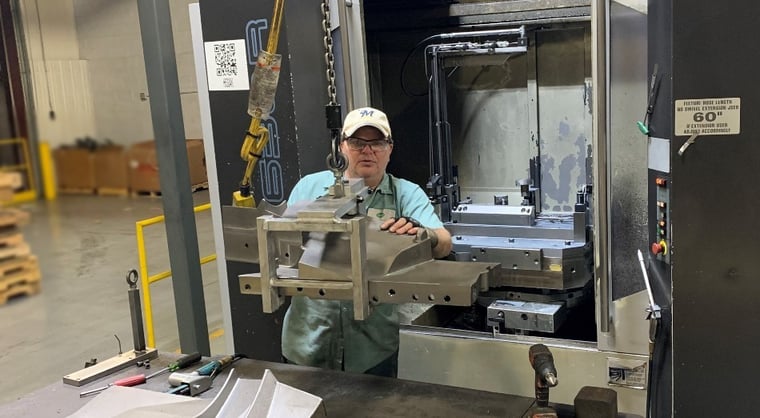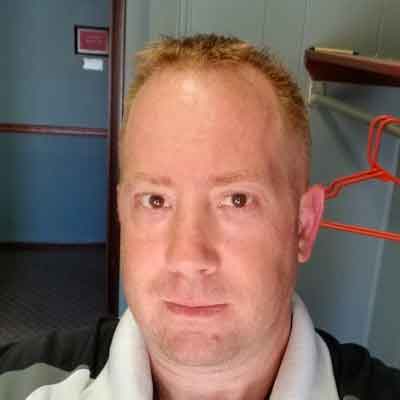Every CNC machine shop is different. No surprise, right? Yet, what telltale signs distinguish one from another? Here’s a pro tip …
Study how they approach new work — from acquiring it to delivering it — throughout the organization.
Some CNC machine shops are content with machining what they know and handling familiar project types and quantities. Their work is solid, and they’ve built a fine, safe business.
Then, there are businesses that are passionate about learning, love to take on challenges, and seek out projects that will expand their skills. These shops are growing, adding new equipment, enjoying their work, and building a diverse workforce. These two types of machine shops instinctively approach new work in different ways, which says a lot about them being a good fit for your precision machining needs.
Think of this article as a playbook for how a CNC machine shop should approach new business. We’ll cover processes, philosophies, equipment, staffing, and more … whatever it takes to get new work done properly.
4 Ways Top CNC Machine Shops Tackle New Work:
1) Setting Up a CNC Machine Shop for Success
2) Being Prepared is Critical
3) Thriving When Opportunity Arises — a Powerful Example
4) Adding Resources to Get the Job Done
1) Setting Up a CNC Machine Shop for Success
Before landing new business, a high-performance machine shop sets itself up for success: assembling the right team members; assessing foundry partnerships; maintaining regular contact with outside suppliers; creating the best available engineering team; developing CNC quality control processes, and sharing the shop’s new business philosophy internally so everyone understands its importance.
Being ready for success is as important as being successful. Here are setup tips we think every machine shop should follow:
- Design Meeting — The CNC machine shop conducts a design review with the customer and the foundry. A small core team from the shop — usually engineering and quality assurance — becomes familiar with the project, the customer, and the foundry (if they don’t already know them).
- Print Mark-Up — The shop’s engineering/quality team, who are experts in GD&T (Geometric Dimensioning and Tolerancing), determines what level of precision is needed and communicates that to CNC operators. Prints need to be usable when the PPAP (see #2 below) is completed. Machine fixtures are concepted according to the 3D model, including clamping options.
- APQP Launch — The full machine shop group assigned to the project develops the APQP (Advanced Product Quality Planning). This product quality plan/framework serves as a guide for the entire manufacturing process including the outside suppliers and foundry partner requirements.
2) Being Prepared is Critical
Not every shop is equipped to take on large projects. For instance, consider a PPAP (Production Part Approval Process), which demonstrates that a supplier’s production processes meet the requirements of a client.
A smaller, 50-person machine shop may complete five PPAPs per month, while a larger shop like Stecker can complete 10-15 per week. The ability to handle nearly 10 times as many PPAPs is a clear signal that a shop is used to, and invests in, winning new work.
PPAPs are a reflection of how a shop tackles new work. For instance, just as Stecker completes a dozen or more PPAPs a week, we can process large, multi-part jobs simultaneously because of investments made in engineering, operators, quality control, and equipment.
That makes OEMs feel confident and comfortable when awarding work. They prefer to minimize the number of suppliers they have to partner with, so if a machine shop can complete many parts all at once as opposed to a handful, the business is more likely to come their way.
Learn the ins and outs of CNC Machining—click now to see our free guide
3) Thriving When Opportunity Arises — a Powerful Example
High-end shops react quickly when new work is awarded. Because winning new projects is in their DNA, their full support staff can “stop and drop,” instantly shifting focus to the new business.
Having that mindset and experience proved to be quite an advantage when a large OEM known for manufacturing heavy equipment approached Stecker Machine with numerous RFQs. Although some work was already being done with other divisions of the OEM, this project’s parts were unfamiliar and tested Stecker’s project management skills.
The OEM’s need to deliver dozens of new heavy equipment pieces meant that many parts all had to come together at the same time for final assembly. That’s expected (not exactly easy, but at least expected).
The main challenge was meeting two short lead-time deadlines:
- Even with the OEM’s planning schedule forecast software, which helps the shop order castings and plan for upcoming machining months out, the timing on this project was tight, especially for the OEM’s PPAP needs. Instead of the typical 6-8 weeks to process a PPAP, Stecker was asked to provide them in 2-3 weeks in some instances, which required exceptional support from engineering, floor, and quality as well as smooth overall coordination. And there weren’t just a handful of parts up for approval (see “quantity” below).
- After the castings arrived at Stecker, all work had to be completed quickly. Everything was new, and all work — fixturing, machining, inspections, quality, etc. — had to be proved out in mere days (not weeks, as is usual). Stecker’s extensive staff of engineers and quality assurance pros joined CNC operators in responding to the “all hands on deck” alert to complete and inspect the work to meet the print.
The second challenge was quantity.
This project was the largest outsourcing casting and machining project in the OEM’s long history. Out of the hundreds of part numbers for casting on the new piece of heavy equipment, Stecker’s first wave of work included over 30 different part numbers, many of those requiring outside sourcing (painting, balancing, etc.).
Services provided for the large OEM project:
— Machining
— Assembly
— Project Management
— Coordinating Outside Services (balancing, painting)
Although all parts were essentially needed at the same time, a priority order was established based on internal assembly and outside sourcing needs, and many steps were expedited.
Some parts were small and easy to handle, while other parts exceeded 400 pounds each (700 pounds when assembled), which added to the challenge of an already difficult-to-machine iron casting. Smaller housings required intricate machining. Other parts needed to be balanced, then assembled, and then painted.
Simply put, Stecker’s work for the project included a variety of tasks and full implementation of project management expertise which led to daily calls with the OEM to review every part’s progress.
With extra hours being logged and the added stress of looming deadlines, even Stecker’s experienced staff felt the pressure. The OEM, to their credit, sent a note of appreciation to inspire the Stecker team, which was displayed on each operator’s monitor:
“I want to thank the entire Stecker team for going above and beyond at every level … I know there is a lot going on around the world and sometimes we can ask for a lot, but you guys have been AMAZING to work with … I cannot thank you enough for everything you’re doing to support us every day.”
4) Adding Resources to Get the Job Done
Effectively tackling new work isn’t just about being ready internally. For instance, in the large OEM project above, Stecker streamlined communication with two outside suppliers: balancing and painting.
Stecker’s engineering and quality control teams conducted onsite visits to inspect the parts. All aspects of the work were reviewed: quality standards, quantity requirements, packaging for shipping, scheduling needs, etc.
The three foundries responsible for castings were selected by Stecker during the RFQ process based on their expertise, cost-competitiveness, and proven trust earned through previous work with Stecker.
Benefits of a Machine Shop Embracing New Jobs
So, you really can judge a CNC machine shop’s overall competence by how it takes on new work. Does the staff react with fear or excitement? Are people worried or energized by a new challenge?
You want to see staff raising their hands to be part of the project:
- CNC operators want in on the APQP process
- Engineers want a chance to advance their skills
- CNC quality control pros want to nail tough standards
When new work is seen as an opportunity for both the company and for personal growth, it’s a win-win-win (staff, company, customer).
That philosophy starts from the top. Stecker’s ownership sets the tone for the entire shop. True flexibility is needed to not only take on new work, but to also develop operator skill sets, add more machines, expand working space, and grow the business.
When a shop has been around as long as Stecker (50 years!), onboarding new business is second-nature. Yet, we never take new opportunities for granted. We lean on foundry partnerships, dedicated machining, assembly expertise, outside suppliers, and project management experience to handle any project’s tight deadlines and quality demands.
Now that you know the top ways that a shop tackles new work, explore if your challenges could use the expertise of an experienced CNC machine shop. Our guide, When Do You Know It’s Time to Work With a High-End CNC Machine Shop?, will help you determine if it’s time to partner with CNC experts. Just click the link below!






